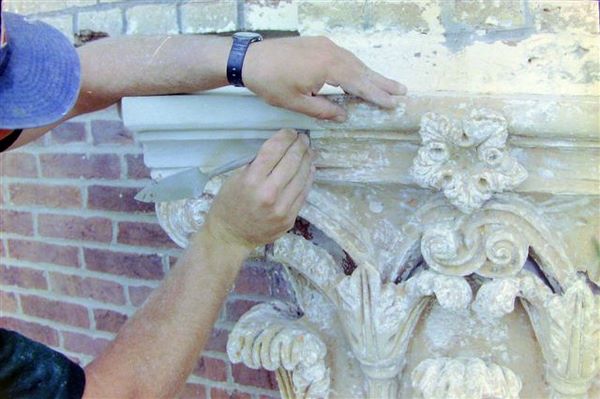Bringing ancient stones back to life is a process steeped in heritage, craftsmanship, and sustainability. https://squareblogs.net/leadaunt5/stone-refurbishment-myths-debunked is more than just fixing a broken exterior; it is an art that requires understanding the elements, approaches, and the historical significance of the structures we value. Whether you are a homeowner looking to preserve a old building or just curious about the complex process of restoring stonework, knowing where to start is vital.
In this guide, we will delve into the key elements of the stone restoration process, including typical mistakes to avoid and the creative strategies that can guarantee your stone restoration project is not only effective and mindful of the heritage. With the appropriate understanding and readiness, you can highlight the natural beauty of old rocks while supporting the sustainable practice of maintaining our architectural heritage.
Crucial Guidelines for Rock Restoration
As you embarking on a rock rehabilitation endeavor, the initial key tip is to assess the condition of the stone carefully. Take of any apparent defects, like fissures, stains, or erosion, and recognize the type class. Various kinds of stone, like limestone, have specific demands and can necessitate different restoration techniques. Understanding these aspects will enable you create a targeted course of action and prevent making financially draining mistakes during the rehabilitation operation.
Another, important aspect to think about is the clean-up strategy. Generally start with the gentlest clean-up substances and methods, particularly for delicate stones that can be readily harmed. Employing neutral pH cleaners and gentle equipment will assist protect the stone's surface while taking away soiling and filth. In addition, conducting a minor test patch before full-scale cleansing can aid determine the optimal approach to prevent damaging the whole area.
In conclusion, maintaining your restored stone is just as important as the rehabilitation process on its own. Consistent care, which includes coating the stone and utilizing proper cleaning agents, will prolong its durability and keep it looking its finest. Contemplate implementing Check out here that includes routine check-ups for indications of damage or issues, which will allow you to handle any issues in advance. This forward-thinking strategy will guarantee that your rock surfaces continue to be vibrant and functional for years to follow.

Protecting and Protecting Natural Stone Surfaces
To secure the longevity of your stone surfaces, consistent maintenance is crucial. Dust and particles can accumulate, leading in marks and dullness over time. It's wise to maintain natural stone with a gentle cloth or mop and a stone-safe cleaner specifically designed for stone. This helps to prevent the build-up of grime while ensuring that the aesthetic of the stone is preserved. A steady cleaning routine will also help you identify any signs of damage promptly, making it easier to fix potential problems before they worsen.
In addition to regular cleaning, shielding stone surfaces from damage is vital. Applying a high-quality stone sealer can offer an extra layer of defense against spills and stains. Applying a sealant to your stone not only enhances its look but also renders it less porous, which aids to prevent moisture entry that can lead to fungus or spores. It's essential to renew the sealer as recommended by the product guidelines, typically every year or two, to ensure optimal protection.
Lastly, steering clear of common household dangers can considerably affect the lifespan of your stone surfaces. Be cautious with materials that can cause etching, such as acidic cleaners or harsh chemicals. Additionally, placing protective mats or pads under large objects can reduce the risk of scratching and dents. By implementing these simple measures and following a consistent care routine, you can maintain your natural stone looking gorgeous and usable for many years to come.
The Value of Residential Restoration in Historical Significance
Residential restoration has a vital role in maintaining the historical narrative of a community. Many antique homes contain tales and importance that reflect the cultural identity and sense of self of the region. By reviving these structures, we celebrate the artistry of those who came before us and ensure that their efforts are not erased to the ages. This effort allows future generations to link with their history, encouraging a sense of community pride and cohesion within the community.
Additionally, preserved historical homes typically serve as learning resources. They offer perspectives into design trends, construction methods, and the social norms of their era. Restoration allows these houses to continue practical while showcasing their original beauty, providing guests a tangible link to the previous eras. As urban areas grow and change, maintaining these heritage homes can also boost visitor engagement, benefiting local economies and encouraging a more profound appreciation for heritage.
Finally, residential restoration contributes to eco-friendliness by lowering the ecological footprint often associated with new developments. Restoring an existing home reduces excess waste and employs the existing resources, working with current practices of sustainable living. In this manner, home restoration not only protects our historical architecture but also encourages ethical use of our environment, ensuring that the heritages of the past continue to enrich our existence today.
